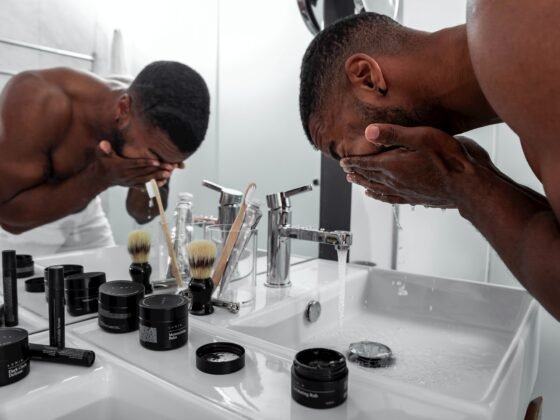Orange County in Florida has a lot going on: the area is home to numerous theme parks, great stretches of beaches, and plenty of other activities to keep everyone happy. Unfortunately, this also means vehicle accidents are relatively common.
In 2021 alone, there were over 27,000 car accidents reported in Orange County. Most drivers know what to do if the other driver is clearly responsible for the accident. However, what happens if both drivers are partially at fault? If you’re partially responsible for the vehicle accident, can you still recover damages?

Understanding No-Fault and Comparative Negligence Laws
Florida follows both no-fault and comparative negligence laws, so what does this mean for your personal injury claim?
A no-fault state basically means each driver involved in the accident turns to their insurance provider to cover damages, and this applies regardless of who’s at fault for the accident. A driver can run a red light and slam into your vehicle.
Even though the accident isn’t your fault, you still file a claim with your auto insurance provider. If you and/or your passengers receive injuries, your PIP (personal injury protection) insurance covers some of the medical expenses.
Under comparative negligence laws, things can get a little complicated. This rule allows a driver who’s partially responsible for the accident to still file a claim to recover some of their financial losses. Your compensation amount is reduced by the percentage of your assigned blame.
For example, if you’re assigned 40% of the blame, your compensation amount is reduced by the same percentage.
However, if you’re more than 50% responsible for the accident, you can’t file a personal injury claim against the other driver.
What Does PIP Cover
All drivers with vehicles registered in Florida must carry PIP insurance. There aren’t any exceptions to this statute. PIP covers a percentage of your medical, disability, or funeral costs.
However, PIP only covers a percentage of these costs, which leaves you responsible for the remaining balance. This is why many drivers decide to file a claim against the other driver. Even being left with 20% of medical costs can result in a substantial bill.
So what does PIP cover?
- Up to 80% of all medical costs. This includes medical, surgical, diagnostic tests, rehabilitation, dental services, and even prosthetic devices. PIP can also cover costs associated with ambulance rides and hospital stays.
- 60% of your annual gross household income if your injuries are severe enough to prevent you from returning to work.
If the accident results in a fatality, PIP pays out $5,000 in death benefits. This also applies to any passengers injured or who perish as a result of the accident.
When Does Comparative Negligence Apply
As mentioned earlier, comparative negligence applies when both involved drivers are responsible for the accident. Don’t forget, to file a claim, you can’t be assigned more than 50% of the blame. If you’re found to be 51% responsible, you can only file a claim with your auto and PIP insurer.
So what are some scenarios when more than one driver may be partially at fault for a traffic accident?
- If the driver in front suddenly slams on their brakes and you hit their rear fender. If there’s no reason for the driver to brake suddenly, the accident may not be entirely your fault. However, proving this can be difficult without supporting video footage and/or corroborating witness testimony.
- A driver is backing out of a driveway or parking spot. The driver may be partially responsible since they didn’t ensure the way was clear. You also assume some of the blame for failing to spot as the car is backing out of its spot.
- A driver pulls out of a parking space into oncoming traffic. Both drivers may be negligent in this accident scenario.
These are only a few examples of accidents when more than one driver may be negligent. Remember, even though you probably can file an accident claim, you’re not going to receive full compensation for your damages.
Steps to Take After a Vehicle Accident
Regardless of who’s to blame for a vehicle accident, the steps to take immediately following the incident are the same.
Report the Accident
While you can wait up to ten days to report some types of minor vehicle collisions, it’s never a good idea to put off filing an accident report. You need the accident report to support your claim, and it takes time before it’s ready for pickup. This means that waiting to start the claim process while your expenses are piling up.
If you’re planning on using comparative negligence laws to file a claim, it’s a good idea to have authorities at the accident scene. This way, the authorities have a better understanding of how the accident occurred and this can go a long way towards supporting your case.
Try to Document the Accident Scene
If your injuries require immediate medical attention, don’t worry about documenting the accident scene. You can get most of the information in your official accident report. If you’re able, take pictures of your vehicle damage and any visible injuries.
Also, go ahead and take pictures of the involved vehicles’ positions. Sometimes, this can help a judge or jury better understand how the accident occurred. If there are any witnesses, get their contact information. Your personal injury attorney and the insurance adjuster will also want to get their statements.
Save Everything
Since you’re filing a claim against the other driver, you’re going to need to prove your case, and this means providing detailed medical records about your injuries.
Any property damage can also be included in the claim. Save all repair receipts and damage estimates. When it comes to proving the other driver’s negligence, you can’t provide the court with too much proof.
Contact an Experienced Accident Attorney
Florida’s laws regarding vehicle accidents are complex, and it’s easy to miss a step. To ensure you’re ready to file a claim against the other driver, you need to prove negligence.
From gathering witness statements to bringing in expert testimony to support your claim, an attorney can take care of everything, making sure your case is thoroughly prepared and maximizing your chances for a successful outcome.
Photo by Rilee Payton on Unsplash












